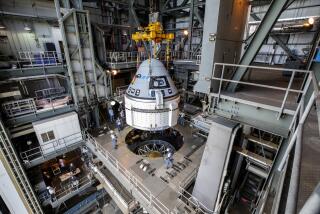D.C. train control system fails in test
WASHINGTON â A train control system that should have prevented Mondayâs deadly commuter rail crash in Washington, D.C., failed in a test conducted by federal investigators, officials said Thursday, suggesting that a crucial breakdown of technology sent one train slamming into another.
Investigators with the National Transportation Safety Board performed the simulation Wednesday night. In the test, investigators positioned a train in the same location as the train that was rear-ended in Mondayâs crash. The system failed to detect that the idled test train was there, the NTSB said. Investigators did not say what caused the malfunction, and they stopped short of saying the system failure caused the crash.
The test results are significant because they confirmed earlier findings of âanomaliesâ in an electrical track circuit in the crash area.
The findings suggest that the oncoming train in Mondayâs crash might not have received information that a train was stopped ahead. The stationary train was struck by a train operated by Jeanice McMillan. She and eight others were killed in the crash; 80 people were injured.
If a malfunctioning circuit failed to detect the stopped train, it would have assumed that the stretch of track in front of McMillanâs train was clear and set the speed of her train at 59 mph, sending it hurtling into the stopped one.
The steel rails show evidence that McMillan activated the emergency brakes before the crash.
An NTSB spokesman said Thursday that no one was available to discuss the findings.
A senior Metro official knowledgeable about train operations said an internal report confirmed that the train control system failed to detect the idling train when the crash occurred about 5 p.m. on a curved section of track between the Fort Totten and Takoma stations.
The operator of the idling train, who was hospitalized after the crash, was also interviewed by federal investigators Thursday. He told them that he saw a train in front of him at the Fort Totten station and stopped to wait for the path to clear, officials said. While stopped, he felt a âhard pushâ from the impact, according to the NTSB.
More to Read
Sign up for Essential California
The most important California stories and recommendations in your inbox every morning.
You may occasionally receive promotional content from the Los Angeles Times.










